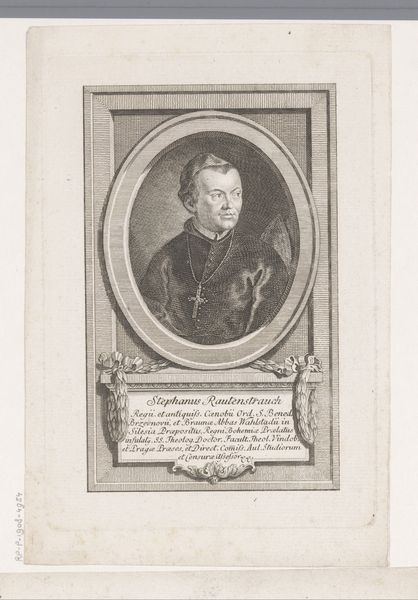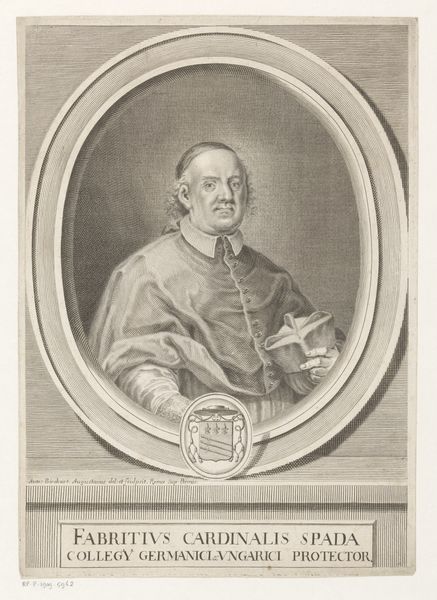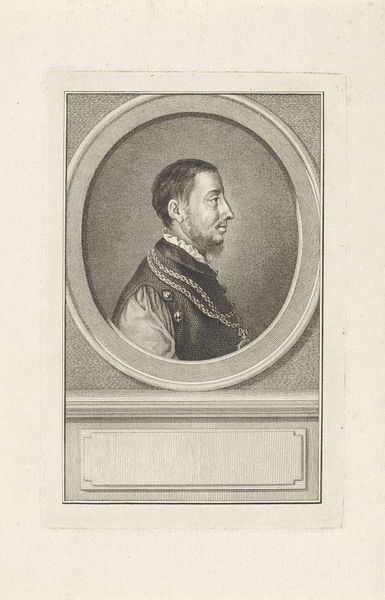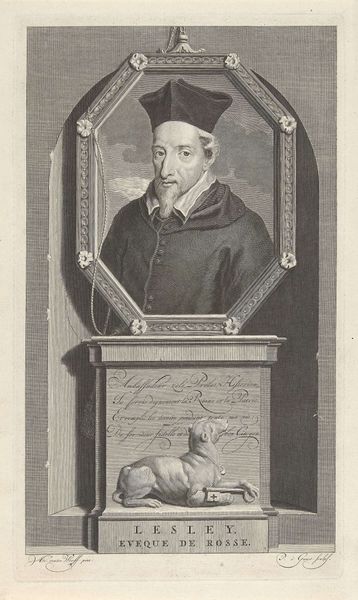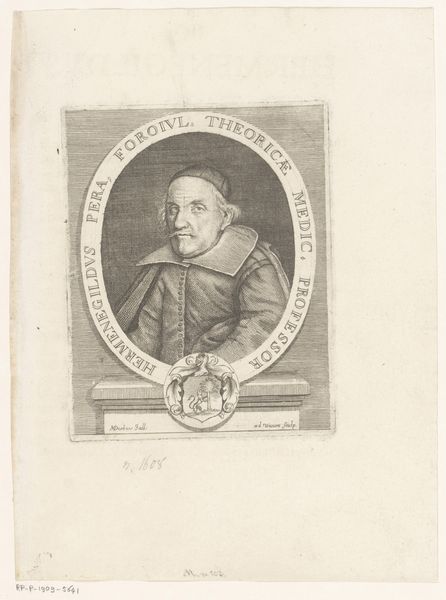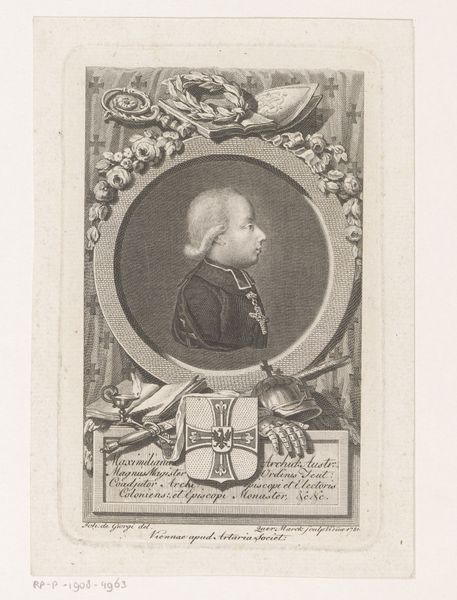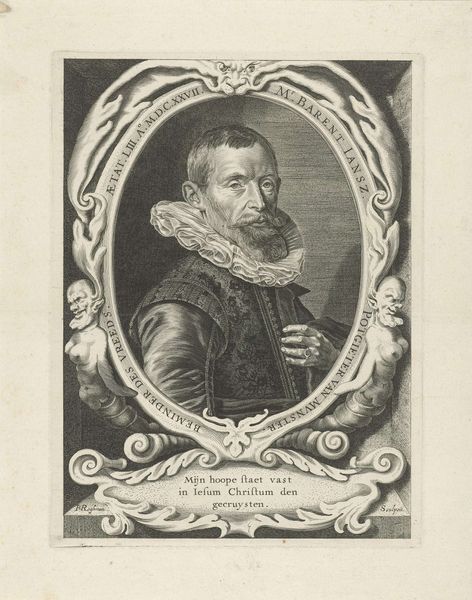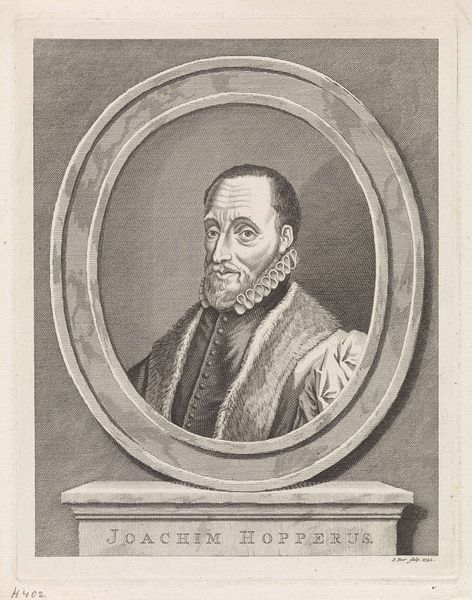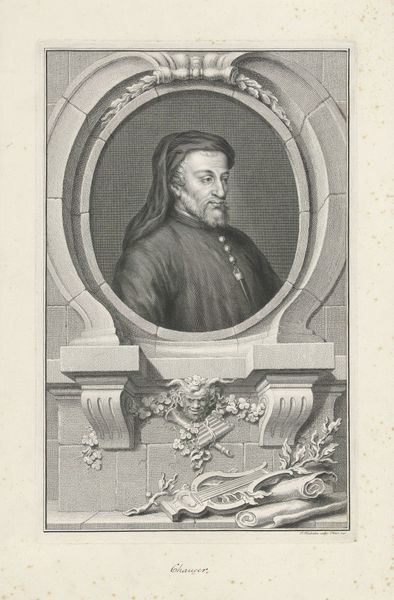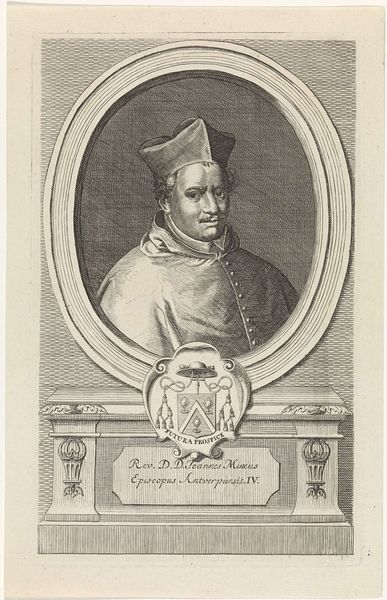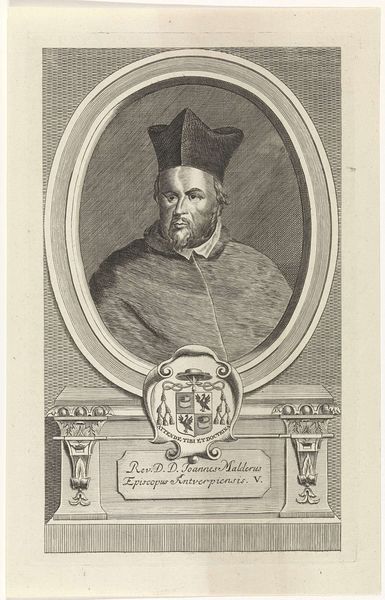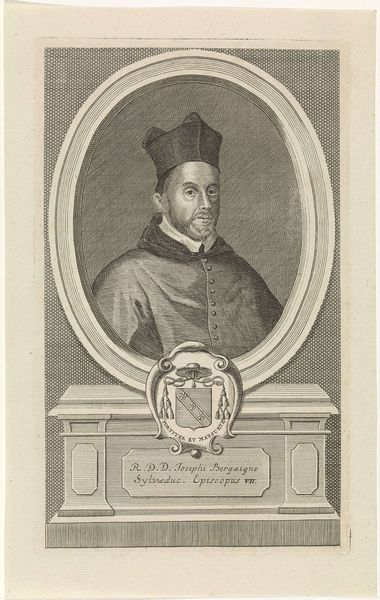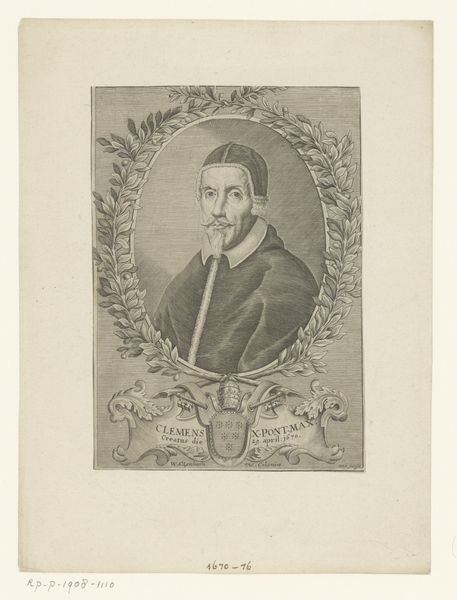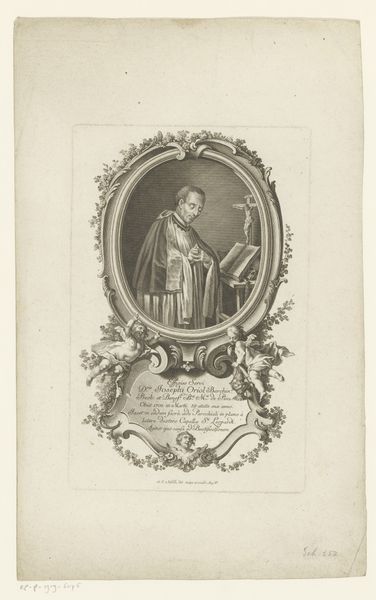
engraving
#
neoclacissism
#
old engraving style
#
history-painting
#
engraving
Dimensions: height 220 mm, width 144 mm
Copyright: Rijks Museum: Open Domain
Curator: This print, currently held at the Rijksmuseum, is titled “Portret van René de Chalon” and was created in 1798 by Jan Gerritsz. Visser. It's an engraving. What are your first thoughts? Editor: Stark. It evokes the sense of viewing history itself, doesn’t it? The contrast and sharp lines are compelling. And what about the overt symbols of wealth and rank, deliberately displayed and then copied in the print? Curator: Absolutely. Engravings like these played a key role in shaping the visual culture and circulating ideologies of status at the time. As a piece created in 1798, it exemplifies Neoclassicism in its deliberate presentation and historical subject, connecting back to imagery and values of classical antiquity. Editor: Right, the way the image constructs and reinforces power dynamics, linking back to tradition. Think about René de Chalon; his life and lineage meant he could almost have this pre-packaged 'hero' story created even two centuries after he died. What part did history-painting as a genre play in all this? Curator: It had a tremendous effect! This engraving belongs to a much wider trend of immortalizing figures in the making of what can only be called propaganda through prints, reinforcing specific interpretations and often bolstering narratives favored by the ruling elite. Even in how later audiences could then interpret it. Editor: Exactly. You have to consider the print's relationship with colonialism and shifting power dynamics, especially how figures like de Chalon were employed within complex nationalistic narratives. It makes one question the long-term societal effects stemming from such visual campaigns. Curator: This is so true. Analyzing these kinds of works helps in understanding power— who holds it, who gets represented, and, vitally, what kind of messages the artists try to pass down to other generations. It urges us to deconstruct visual language that surrounds us daily, so we might gain a greater insight into who benefits from it all. Editor: Well, this print leaves one reflecting on the complex intersections of historical memory and the ongoing construction of legacy. Food for thought indeed.
Comments
No comments
Be the first to comment and join the conversation on the ultimate creative platform.
